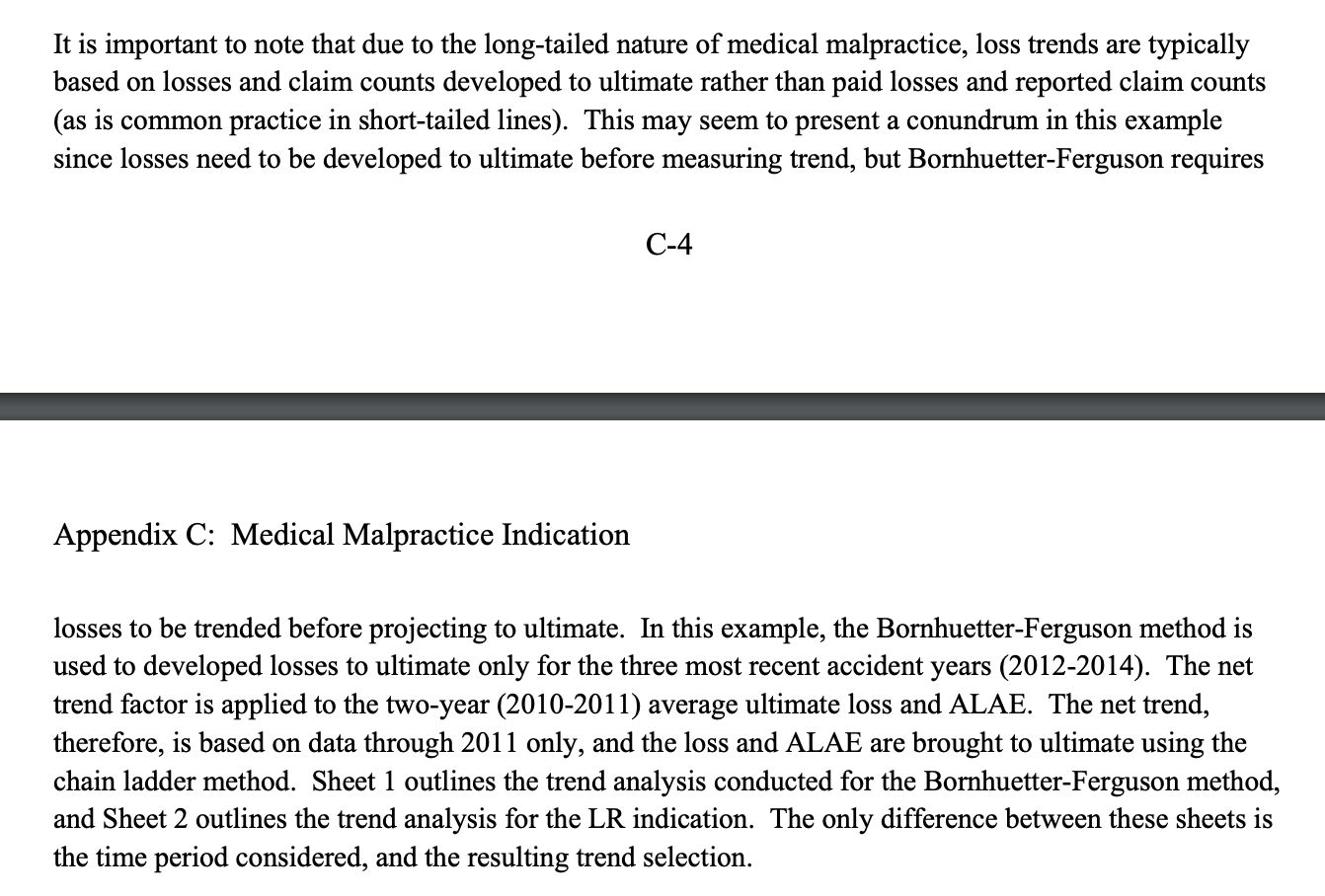Net Trend
To clarify, the BF method required a trend factor to calculate ultimates, but the net trend selection requires ultimates which uses those derived from the BF method?
(As a side, I recall that for BF we use EP and not OLEP. In the case of losses, we should use trend the losses?)
Because the BF method is used for 2012-2014, we use 2005-2011 to select a net trend (in sheet 1) and use this for calculating a BF ultimate for 2012-2014. Once we have ultimate losses for 2012-2014, we use those ultimates to select a net trend for all accident years and which is used for the indicated rate change?

Comments
You're right in noting the somewhat circular logic: The Bornhuetter-Ferguson (BF) method requires trended data to estimate ultimate losses, but the net trend itself is based on ultimate losses. This is an example of the complexities involved in actuarial work, where multiple methods intersect and inform each other.
Hope this clears things up.